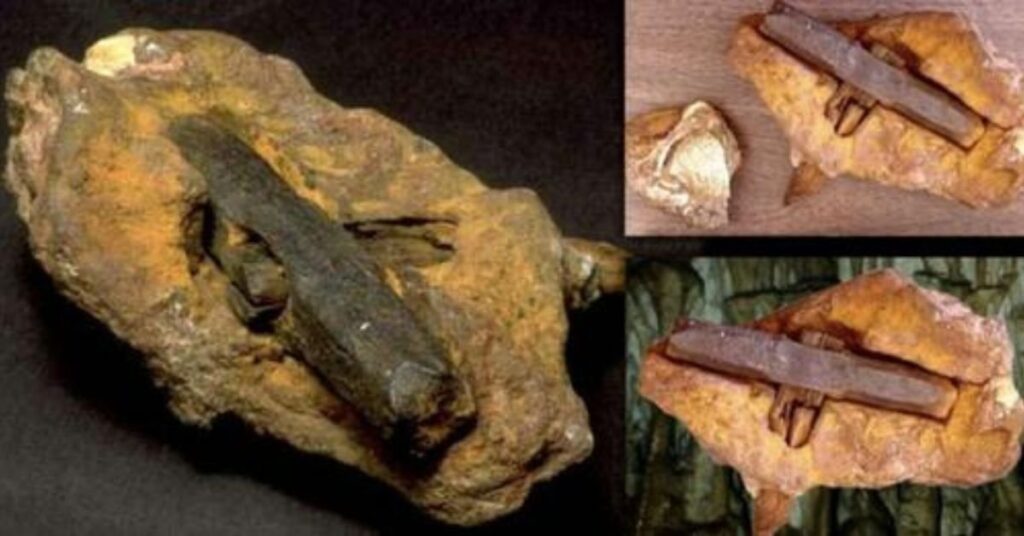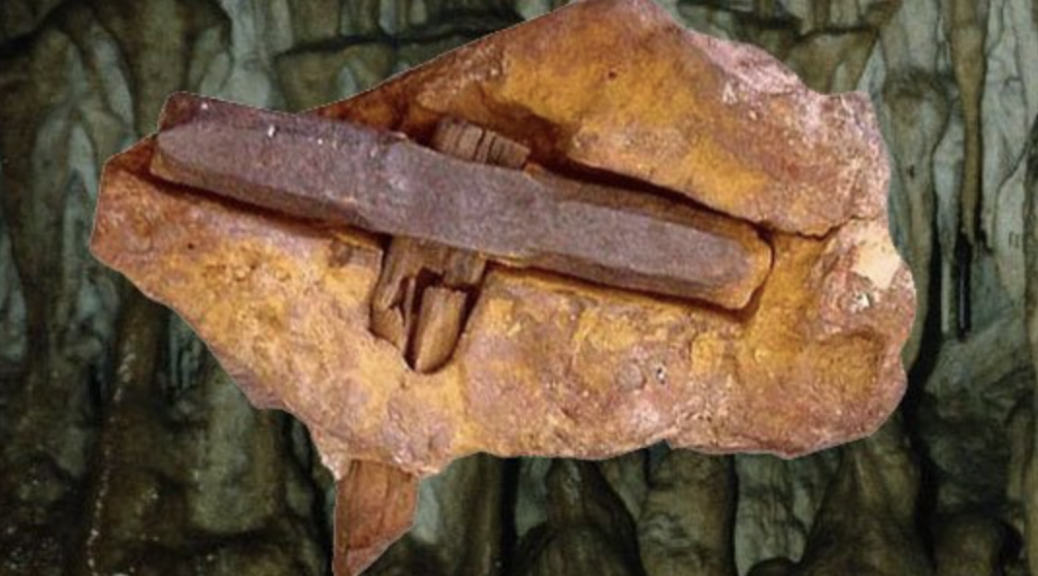The Mystery Of The Modern “London Hammer” Found Encased In Ancient Rock
While walking along Red Creek, London, Texas, in June 1936, Emma Zadie Hahn and her husband Max Edmond Hahn made an unusual discovery: a piece of wood poking out of what appeared to be an ancient rock formation.
The story goes that ten-ish years later, their son, who was clearly born with the merest hint of curiosity that they lacked, smashed open the rock to see what was inside. What he found was a hammer. Where it gets weirder is that it was clearly a modern(ish) hammer.
The hammer attracted the unhelpful attention of Young Earth Creationist Carl Baugh, who claimed that the rock around the hammer was from the Cretaceous period.

This would mean that whoever dropped the hammer of 19th-century design did so while (e.g.) running away from a triceratops.
For Baugh, who was himself incorrect, this was evidence that evolution theory was incorrect.
“If the artifact is truly from the Cretaceous time frame, where does this leave evolutionary theory, since man was not supposed to have evolved for another 100-million years or so?” Baugh asked. “If the artifact is relatively recent, that means that the Cretaceous Hensell Sand formation from which it came is relatively young… Again, where does that leave evolutionary theory with its traditional dates for the Cretaceous formations?”
The answer, of course, was that the hammer was modern, but it had become encased in the rock by geological processes not known to Baugh.
“The stone is real, and it looks impressive to someone unfamiliar with geological processes.
How could a modern artifact be stuck in Ordovician rock?” investigator Glen J. Kuban asked in a 1997 paper on the hammer, published in Paleo.
“The answer is that the concretion itself is not Ordovician.
Minerals in solution can harden around an intrusive object dropped in a crack or simply left on the ground if the source rock (in this case, reportedly Ordovician) is chemically soluble.”
While an extremely cool find, the rock formation is not as ancient as it appears.
Likely, a miner dropped the hammer a century ago, or perhaps a touch earlier, after which the rock formed around it. It was not, repeat, not, proof of The Flintstones.
